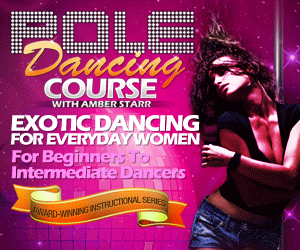How To Treat Achilles Tendon Injuries In A Dancer
Problems in the Achilles tendon are common in dancers and it is a generally poorly understood injury in many dance circles. It is important that several other issues that may give you pain in the back of the ankle are ruled out first, before trying this program, so check with a sports doctor or physiotherapist / physical therapist before you go ahead. Other things that may give you pain behind the ankle include may an extra bone at the back of the ankle called an ‘os Trigonum’ and a syndrome called ‘Posterior Impingement’
If you do have a problem with the Achilles Tendon, it responds best if treatment is started at an early stage, but even then it may take a while to heal (sometimes in excess of three months) Long-standing Achilles tendonopathy may require an intense rehab program of up to six months. This is because it has usually developed over a long period of time, and is usually due to weaknesses or imbalances in several different areas, so it is important to correct all of these to gain a full recovery.
The keys to successful rehabilitation of Achilles tendonopathy are;
- Early diagnosis and RICE treatment to prevent further damage
- An Eccentric Strengthening Program (described below)
- Correction of any predisposing factors such as muscle tightness, weakness or abnormal movement patterns
- Core Strengthening Program
- Appropriate progression to functional activities and sport-specific rehabilitation.
If you see a therapist, they may do some massage and mobilization techniques to make sure that all the bones in your feet are moving properly. This is very important, as stiffness in the foot may have been one of the major initial causes of the injury.
“Eccentric exercises” are exercises where the muscle is contracting while it is lengthening. This sounds odd, but is possible! While these exercises have been shown in several studies to be the best thing for rehabilitating Achilles problems, they do have the potential to cause damage if performed inappropriately or excessively. You should always start with an adequate warm-up and commence the exercise cautiously. It is normal, however, to get some pain when you begin the strengthening program and at each new load. You should only progress to the next exercise when the previous version is pain-free both during and following the activity, and on the advice of a qualified medical professional. Always ice the area (on a stretch) after doing these exercises.
Eccentric Exercises.
- Bilateral heel drop. Place feet on to the edge of a step in a demi-pointe position (use a barre for support). Slowly, lower your heels below the level of the step. Repeat for three sets of 15, twice a day. Make sure that your feet and arches stay in a good position the whole time! Arches on! Remember not to rise up from the low position. but place your feet back into the starting position. Contracting the calves via rises may aggravate the injury. Do some sets with the knees straight, and some sets with the knees bent to target the deep calf muscles more (Soleus)
- Increase the amount of weight through the injured leg.
- Single leg heel drop. Rise onto demi pointe on the edge of the step with both feet. Transfer the weight to one foot, and slowly lower the heel to below the edge of the step.
- Add weights
NB: Ice should always be applied following exercise.
As with any overuse injury, it is important that the predisposing factors are corrected. Things that any supervising medical professional should be looking at include:
- Generalized tightness of the calf muscles
- Reduced range of motion in the ankle or mid foot joints
- Control of arch and small toe muscles (see: The Perfect Pointe Book!)
- Pelvic Stability
- Abdominal control
Return to activity should be gradual. You may usually return to dancing when any tenderness to touch has settled. Until then it is best to do a ‘Floor Barre’ to avoid extra loading on the tendons, but to maintain mobility and strength. Doing other exercises such as Pilates will help speed your return to full dancing and stop you from getting too weak! On return to activity, a small heel raise may be used to reduce the load on the Achilles tendon (in both shoes).





